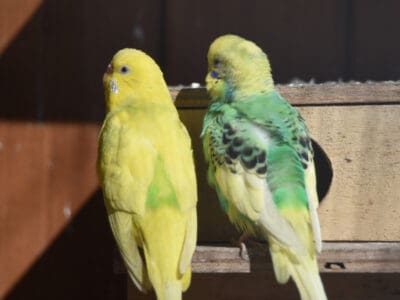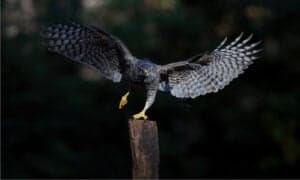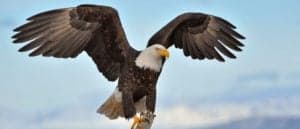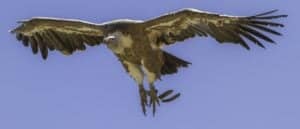Are Birds Reptiles? It’s Complicated!
@media (min-width: 481px) {
.mobile-top-content {
display: none;
}
}
#mobileTopContentCTACarouselControls { overflow: hidden; text-overflow: ellipsis; white-space: nowrap; }
.mobile-top-content .more { color: #fff; }
.mobile-top-content a { color: #fff; text-decoration: underline; }
.mobile-top-content a:hover { color: #fff; text-decoration: underline; }
@media (max-width: 480px) {
.mobile-top-content {
background-color: #06a10b;
color: #fff;
text-align: center;
/*height: 60px;
padding-top:5px;*/
font-size:80%;
/* display: block; */
margin: 0px -30px;
}
}
Having plenty of ways to classify and organize animals based on their physical traits and ancestry has made studying them much easier for scientists. However, sometimes things get tricky, especially when we look at how groups of animals have evolved and branched off from one another over time. In particular, birds have been quite troublesome for biologists, especially regarding whether birds are reptiles and whether they deserve their own distinct classification!
So, are our feathered friends truly reptilian in nature or not? It’s actually surprisingly complicated–keep reading to learn why.
Are Birds Reptiles, Mammals, or Something Else?

David McMillan/Shutterstock.com
button.pulse {
transform: scale(1); animation: pulse 2s infinite;
box-shadow: 0 0 0 0 rgba(11, 247, 25, 1);
}
@keyframes pulse {
0% { transform: scale(0.90); box-shadow: 0 0 0 0 rgba(11, 247, 25, 0.5); }
60% { transform: scale(1); box-shadow: 0 0 0 15px rgba(11, 247, 25, 0); }
100% { transform: scale(0.90); box-shadow: 0 0 0 0 rgba(11, 247, 25, 0); }
}
Birds are technically reptiles–but there’s a lot more to it than that, and it kind of depends on who you ask!
Biologists actually use two main systems to classify and define animals: the original Linnaean system created in the early 1700s by Swedish zoologist Carolus Linnaeus and the more modern phylogenetic system developed in the 1940s by German biologist Willi Hennig.
To Linnaeus, birds and reptiles belong to distinct groups, but to Hennig, birds are reptiles. This is because the ways the two scientists classified animals are very different.
While the Linnaean system classifies animals based on the visible physical characteristics they share, Hennig organized animals based on their lineages and the animals they descended from. This means whether birds are reptiles or not depends on which system you’re using to classify them.
Today, biologists use both systems in different situations depending on the context. However, modern researchers are leaning more towards Hennig’s outlook on animal classification. Let’s look at both systems in a little more detail below.
Birds, Reptiles, and the Linnaean System

jurra8/Shutterstock.com
As we touched above, Carolus Linnaeus proposed that animals should be classified and organized based mainly on the physical characteristics they share, regardless of their ancestry or what other animals they actually evolved from.
In this system, birds and reptiles are separate. This is because they share a few physical characteristics but not nearly enough to belong to the same group. Linnaeus originally defined the class for birds, Aves, in 1758.
More specifically, according to Linnaeus, birds are animals that have feathers, toothless, beaked jaws, four-chambered hearts, lightweight skeletons, and lay eggs with hard, thin shells. Reptiles, in this system, are any animals that have scaly skin and are ectothermic. Since reptiles have unique qualities that birds do not share, they belong to the distinct Reptilia class.
This is where things get tricky, though. In the 1940s, Willi Hennig proposed a new classification system. This system grouped animals based on their ancestry rather than physical similarities.
Birds, Reptiles, and Hennig’s Phylogenetic System

iStock.com/Banu R
In the years following the Linnaean system, researchers unearthed more details about animals’ fossil records and lineages. This allowed us to paint a more detailed picture of how certain animals evolved from one another and branched off into different groups.
Eventually, biologist Willi Hennig proposed that a new classification system be developed based on this emerging information.
According to Hennig’s more modern system, animals should be classified by how closely they are actually related to one another. This means virtually any animal that descended from the original group of reptiles around 300 million years ago is considered a reptile. The term for Hennig’s system, phylogenetics, originates from the Greek words for “race/lineage” and “origin/source.”
If we adhere to this classification system, birds are reptiles simply because they descended from the original reptiles. In fact, they’re most closely related to crocodilians, some of the oldest reptiles.
Interestingly, if we were to go back far enough, mammals would technically be descendants of the original reptilian animals as well. Crucially, though, mammals aren’t nearly as closely related to them as birds are. All life on Earth can be placed on a single phylogenetic “tree,” sharing common ancestors that go back millions of years.
Did Birds Evolve From Dinosaurs?

Orla/Shutterstock.com
With Hennig’s phylogenetic classification system in mind, birds first evolved from theropod dinosaurs around 150 million years ago. Theropod dinosaurs, like birds, had lightweight, hollow bones and three-toed limbs. These theropods were likely the first animals to ever grow feathers.
After the major extinction event that killed off the vast majority of dinosaurs, only a small group of feathered theropod dinosaurs survived. Eventually, all modern birds split off and descended from this group.
Over time, birds developed more and more traits that we know and recognize them for having today. Their bone structure became even smaller and more lightweight, with many bones fusing together entirely. Their previously large, bulky tails shrunk and became stumps. These stumpy rumps became covered in light tailfeathers to give them stability so they (most of them, anyway) could eventually take flight.
As early birds’ bodies became more suited to flight than running, they became increasingly more lightweight and aerodynamic. They grew more feathers all over their bodies to keep their bodies and eggs warm. More and more groups of birds diversified and branched off from the original group. In time, this led to the development of the more than 10,000 total species that we know today.
In fact, you could argue that birds not only came from dinosaurs–they are modern dinosaurs, in a way!
More from A-Z Animals
.more-snake-card-image { max-height:140px !important; }
@media (min-width: 481px) {
.mobile-top-content {
display: none;
}
}
#mobileTopContentCTACarouselControls { overflow: hidden; text-overflow: ellipsis; white-space: nowrap; }
.mobile-top-content .more { color: #fff; }
.mobile-top-content a { color: #fff; text-decoration: underline; }
.mobile-top-content a:hover { color: #fff; text-decoration: underline; }
@media (max-width: 480px) {
.mobile-top-content {
background-color: #06a10b;
color: #fff;
text-align: center;
/*height: 60px;
padding-top:5px;*/
font-size:80%;
/* display: block; */
margin: 0px -30px;
}
}
Having plenty of ways to classify and organize animals based on their physical traits and ancestry has made studying them much easier for scientists. However, sometimes things get tricky, especially when we look at how groups of animals have evolved and branched off from one another over time. In particular, birds have been quite troublesome for biologists, especially regarding whether birds are reptiles and whether they deserve their own distinct classification!
So, are our feathered friends truly reptilian in nature or not? It’s actually surprisingly complicated–keep reading to learn why.
Are Birds Reptiles, Mammals, or Something Else?

David McMillan/Shutterstock.com
button.pulse {
transform: scale(1); animation: pulse 2s infinite;
box-shadow: 0 0 0 0 rgba(11, 247, 25, 1);
}
@keyframes pulse {
0% { transform: scale(0.90); box-shadow: 0 0 0 0 rgba(11, 247, 25, 0.5); }
60% { transform: scale(1); box-shadow: 0 0 0 15px rgba(11, 247, 25, 0); }
100% { transform: scale(0.90); box-shadow: 0 0 0 0 rgba(11, 247, 25, 0); }
}
Birds are technically reptiles–but there’s a lot more to it than that, and it kind of depends on who you ask!
Biologists actually use two main systems to classify and define animals: the original Linnaean system created in the early 1700s by Swedish zoologist Carolus Linnaeus and the more modern phylogenetic system developed in the 1940s by German biologist Willi Hennig.
To Linnaeus, birds and reptiles belong to distinct groups, but to Hennig, birds are reptiles. This is because the ways the two scientists classified animals are very different.
While the Linnaean system classifies animals based on the visible physical characteristics they share, Hennig organized animals based on their lineages and the animals they descended from. This means whether birds are reptiles or not depends on which system you’re using to classify them.
Today, biologists use both systems in different situations depending on the context. However, modern researchers are leaning more towards Hennig’s outlook on animal classification. Let’s look at both systems in a little more detail below.
Birds, Reptiles, and the Linnaean System

jurra8/Shutterstock.com
As we touched above, Carolus Linnaeus proposed that animals should be classified and organized based mainly on the physical characteristics they share, regardless of their ancestry or what other animals they actually evolved from.
In this system, birds and reptiles are separate. This is because they share a few physical characteristics but not nearly enough to belong to the same group. Linnaeus originally defined the class for birds, Aves, in 1758.
More specifically, according to Linnaeus, birds are animals that have feathers, toothless, beaked jaws, four-chambered hearts, lightweight skeletons, and lay eggs with hard, thin shells. Reptiles, in this system, are any animals that have scaly skin and are ectothermic. Since reptiles have unique qualities that birds do not share, they belong to the distinct Reptilia class.
This is where things get tricky, though. In the 1940s, Willi Hennig proposed a new classification system. This system grouped animals based on their ancestry rather than physical similarities.
Birds, Reptiles, and Hennig’s Phylogenetic System

iStock.com/Banu R
In the years following the Linnaean system, researchers unearthed more details about animals’ fossil records and lineages. This allowed us to paint a more detailed picture of how certain animals evolved from one another and branched off into different groups.
Eventually, biologist Willi Hennig proposed that a new classification system be developed based on this emerging information.
According to Hennig’s more modern system, animals should be classified by how closely they are actually related to one another. This means virtually any animal that descended from the original group of reptiles around 300 million years ago is considered a reptile. The term for Hennig’s system, phylogenetics, originates from the Greek words for “race/lineage” and “origin/source.”
If we adhere to this classification system, birds are reptiles simply because they descended from the original reptiles. In fact, they’re most closely related to crocodilians, some of the oldest reptiles.
Interestingly, if we were to go back far enough, mammals would technically be descendants of the original reptilian animals as well. Crucially, though, mammals aren’t nearly as closely related to them as birds are. All life on Earth can be placed on a single phylogenetic “tree,” sharing common ancestors that go back millions of years.
Did Birds Evolve From Dinosaurs?

Orla/Shutterstock.com
With Hennig’s phylogenetic classification system in mind, birds first evolved from theropod dinosaurs around 150 million years ago. Theropod dinosaurs, like birds, had lightweight, hollow bones and three-toed limbs. These theropods were likely the first animals to ever grow feathers.
After the major extinction event that killed off the vast majority of dinosaurs, only a small group of feathered theropod dinosaurs survived. Eventually, all modern birds split off and descended from this group.
Over time, birds developed more and more traits that we know and recognize them for having today. Their bone structure became even smaller and more lightweight, with many bones fusing together entirely. Their previously large, bulky tails shrunk and became stumps. These stumpy rumps became covered in light tailfeathers to give them stability so they (most of them, anyway) could eventually take flight.
As early birds’ bodies became more suited to flight than running, they became increasingly more lightweight and aerodynamic. They grew more feathers all over their bodies to keep their bodies and eggs warm. More and more groups of birds diversified and branched off from the original group. In time, this led to the development of the more than 10,000 total species that we know today.
In fact, you could argue that birds not only came from dinosaurs–they are modern dinosaurs, in a way!







